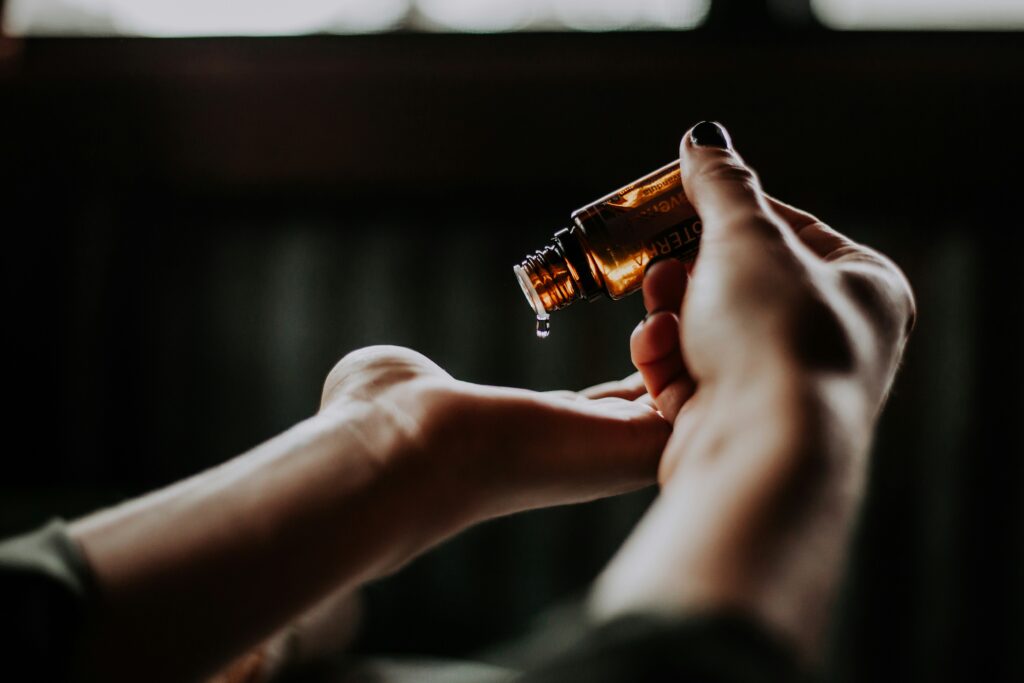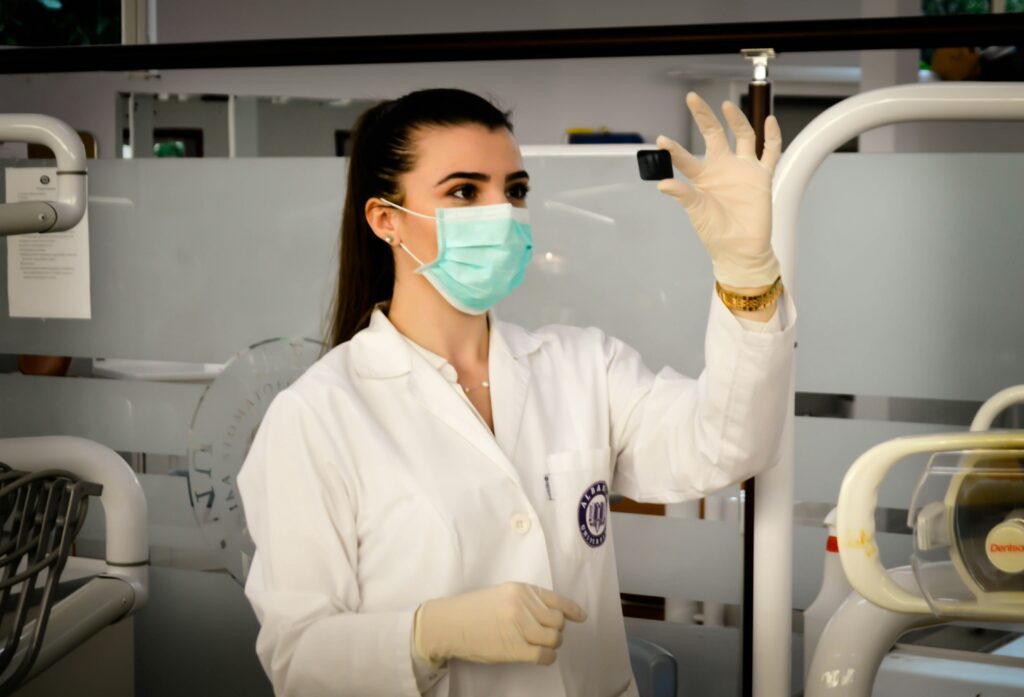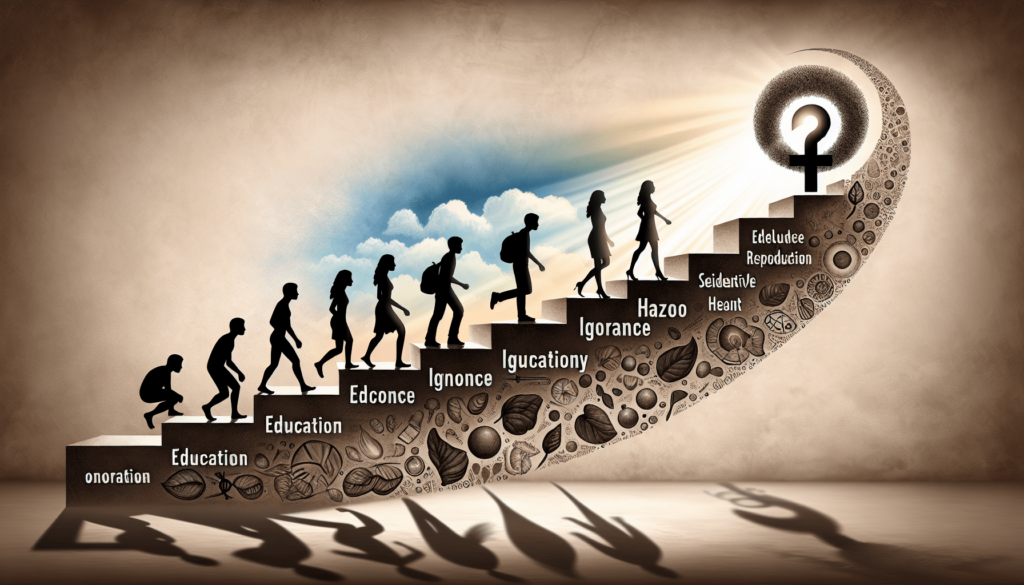Essential Oils by PURE AROMA 100% Pure Oils kit- Top 6 Aromatherapy Oils Gift Set-6 Pack, 10ML(Eucalyptus, Lavender, Lemon Grass, Orange, Peppermint, Tea Tree)
$9.98 (as of May 18, 2024 12:13 GMT +00:00 - More infoProduct prices and availability are accurate as of the date/time indicated and are subject to change. Any price and availability information displayed on [relevant Amazon Site(s), as applicable] at the time of purchase will apply to the purchase of this product.)EVOKE OCCU Citronella Essential Oil 4 Oz, Pure Citronella Oil for Skin Hair Diffuser Spray Roll On- 4 FL Oz
$8.88 (as of May 18, 2024 12:13 GMT +00:00 - More infoProduct prices and availability are accurate as of the date/time indicated and are subject to change. Any price and availability information displayed on [relevant Amazon Site(s), as applicable] at the time of purchase will apply to the purchase of this product.)TROJAN Magnum BareSkin Premium Large Condoms, Comfortable and Smooth Lubricated Condoms for Men, America’s Number One Condom, 24 Count Value Pack
$15.97 (as of May 18, 2024 12:13 GMT +00:00 - More infoProduct prices and availability are accurate as of the date/time indicated and are subject to change. Any price and availability information displayed on [relevant Amazon Site(s), as applicable] at the time of purchase will apply to the purchase of this product.)In this video by the World Health Organization (WHO), you will explore the changing landscape of adolescent sexual and reproductive health and rights. The content aims to provide valuable information and insights on this important topic. By watching this video, you can expect to gain a better understanding of the latest developments in this area, as well as the challenges and opportunities that exist. This content is designed to showcase the expertise and authority of WHO, ensuring that you receive accurate and trustworthy information. So sit back, relax, and get ready to delve into the fascinating world of adolescent sexual and reproductive health and rights.
The video presents an array of content that covers various aspects of this field, without featuring any specific author. It highlights the importance of addressing sexual and reproductive health issues for adolescents, providing them with the necessary information and support. By presenting this content, WHO aims to empower and educate individuals about the changes, concerns, and advancements in adolescent sexual and reproductive health and rights. So make sure to watch the video to stay informed and gain a better understanding of this important topic.
Introduction to Adolescent Sexual and Reproductive Health and Rights
Definition and scope
Adolescent sexual and reproductive health and rights (ASRHR) refers to the well-being and rights of individuals between the ages of 10 and 19 in relation to their sexual and reproductive lives. It encompasses a wide range of issues including comprehensive sex education, access to contraception and family planning services, prevention and treatment of sexually transmitted infections (STIs), and the right to make informed decisions about their own bodies and reproductive choices.
Importance of addressing adolescent sexual and reproductive health and rights
Adolescence is a critical period in human development, marked by many physical, emotional, and social changes. It is during this time that young people begin to explore their sexuality and form intimate relationships. Promoting the sexual and reproductive health and rights of adolescents is crucial for ensuring their overall well-being, preventing negative health outcomes, and empowering them to make informed decisions about their bodies and relationships.
Key Challenges in Adolescent Sexual and Reproductive Health and Rights
Lack of comprehensive sex education
One of the major challenges in ASRHR is the lack of comprehensive sex education programs in many countries. Inadequate or limited sex education leaves young people ill-equipped with the knowledge and skills they need to make healthy and informed decisions about their sexuality. It can contribute to high rates of unintended pregnancies, STIs, and unsafe abortion.
Access to contraception and family planning services
Limited access to contraception and family planning services is another barrier to ASRHR. Many adolescents face cultural, societal, and legal barriers that prevent them from accessing these services. Lack of access to contraception can lead to unintended pregnancies and unsafe abortions, which pose significant risks to the health and well-being of young women.

Teenage pregnancy and its consequences
Teenage pregnancy is a pressing issue in ASRHR. It can have serious consequences for both the adolescent mother and her child, including higher rates of maternal mortality and morbidity, lower educational attainment, and increased risk of poverty. Addressing teenage pregnancy requires comprehensive sex education, access to contraception, and support for young mothers to ensure they can continue their education and pursue their goals.
HIV/AIDS and other sexually transmitted infections
Adolescents are particularly vulnerable to HIV/AIDS and other sexually transmitted infections (STIs). Unsafe sexual practices, lack of access to information and services, and social stigma contribute to the high rates of STIs among young people. It is crucial to prioritize comprehensive sex education, access to condoms and other preventive measures, and HIV testing and treatment services to prevent the spread of these infections.
Gender inequality and harmful cultural practices
Gender inequality and harmful cultural practices, such as child marriage and female genital mutilation/cutting, pose significant challenges to ASRHR. These practices violate the rights of adolescents, particularly girls, and can have severe consequences for their health and well-being. Addressing gender inequality and harmful cultural norms is essential for promoting the sexual and reproductive rights of adolescents.
Barriers to seeking sexual and reproductive healthcare
Adolescents often face various barriers when seeking sexual and reproductive healthcare, including lack of confidentiality, judgmental attitudes from healthcare providers, and limited availability of youth-friendly services. These barriers can deter young people from seeking the care they need, leading to negative health outcomes. Creating a safe and supportive environment in healthcare settings is crucial to ensure that adolescents can access the care they need without fear of judgment or discrimination.
Promoting Adolescent Sexual and Reproductive Health and Rights

Comprehensive sex education programs
Comprehensive sex education plays a crucial role in promoting ASRHR. It equips young people with accurate and age-appropriate information about their bodies, relationships, and sexual health. Comprehensive sex education should cover a wide range of topics, including anatomy, puberty, contraception, STIs, consent, and healthy relationships. It should be inclusive, non-judgmental, and tailored to the specific needs of different populations.
Availability and accessibility of contraception
Improving access to contraception and family planning services is essential for promoting ASRHR. This includes ensuring the availability of a wide range of contraceptive methods, removing barriers to access such as cost and age restrictions, and providing accurate information about their use. Healthcare providers and community-based organizations play a critical role in delivering contraception services and counseling to adolescents.
Youth-friendly healthcare services
Creating youth-friendly healthcare services is crucial for encouraging adolescents to seek sexual and reproductive healthcare. These services should be accessible, affordable, confidential, non-judgmental, and tailored to the specific needs of young people. They should also provide a range of services, including contraception, STI testing and treatment, counseling, and referrals to specialized care when needed.
Empowerment of adolescent girls and women
Empowering adolescent girls and women is central to promoting ASRHR. This includes providing them with information, resources, and opportunities to make informed decisions about their bodies and relationships. Empowering girls and women also involves addressing gender inequalities, promoting gender-responsive policies, and ensuring equal access to education, employment, and healthcare.

Promoting gender equality and changing harmful cultural norms
Addressing gender equality and harmful cultural norms is crucial for promoting ASRHR. This involves challenging gender stereotypes, promoting respect and equality in relationships, and eliminating harmful practices such as child marriage and female genital mutilation/cutting. It also requires engaging with communities, religious leaders, and policymakers to change attitudes and behaviors that perpetuate gender inequality and harmful cultural practices.
Advocacy and policy reforms
Advocacy and policy reforms are essential for promoting ASRHR at the national and international levels. This includes advocating for comprehensive sex education policies, increased funding for ASRHR programs, and the removal of legal barriers that restrict the rights of adolescents. Civil society organizations, youth-led movements, and healthcare providers play a crucial role in advocating for policy changes and holding governments accountable for their commitments to ASRHR.
The Role of Parents and Caregivers in Adolescent Sexual and Reproductive Health and Rights
Open communication about sexuality and relationships
Parents and caregivers have a vital role in promoting ASRHR through open and supportive communication about sexuality and relationships. Creating an environment where young people feel comfortable discussing their questions, concerns, and experiences can help them make informed decisions about their sexual health. It is important for parents and caregivers to provide accurate information, address any misconceptions, and promote positive attitudes towards sexuality.
Supporting access to sexual and reproductive healthcare
Parents and caregivers can support access to sexual and reproductive healthcare by providing information about available services and resources, helping adolescents navigate the healthcare system, and addressing any barriers they may face in seeking care. This includes discussing the importance of regular check-ups, contraception, and STI testing, and ensuring that adolescents have access to necessary healthcare services without fear of judgment or stigma.

Promoting healthy relationships and consent education
Parents and caregivers play a critical role in promoting healthy relationships and consent education. This involves teaching young people about respect, boundaries, and consent, and fostering open discussions about healthy relationships. Parents and caregivers should model respectful behavior, reinforce the importance of consent, and encourage young people to develop positive communication skills and decision-making abilities.
The Role of Schools and Educational Institutions in Adolescent Sexual and Reproductive Health and Rights
Integration of comprehensive sex education into curriculum
Schools and educational institutions have a responsibility to integrate comprehensive sex education into the curriculum. This involves providing age-appropriate and evidence-based information about sexual and reproductive health as part of a comprehensive health education program. Sex education should be taught by qualified teachers and cover a wide range of topics, including anatomy, puberty, contraception, STIs, consent, and healthy relationships.
Addressing gender norms and stereotypes
Schools and educational institutions can contribute to promoting ASRHR by challenging and addressing gender norms and stereotypes. This includes fostering an inclusive and respectful learning environment that promotes gender equality and encourages young people to challenge traditional gender roles. Schools can also implement programs and initiatives that promote gender equality, such as gender clubs, peer education, and awareness campaigns.
Creating a safe and inclusive learning environment
Creating a safe and inclusive learning environment is essential for promoting ASRHR in schools. This involves implementing policies and practices that prevent bullying, discrimination, and harassment based on sexual orientation, gender identity, and gender expression. Schools should also provide access to confidential counseling services and support networks for students who may need assistance with their sexual and reproductive health.
The Role of Healthcare Providers in Adolescent Sexual and Reproductive Health and Rights

Providing accurate and non-judgmental information and services
Healthcare providers play a crucial role in promoting ASRHR by providing accurate, evidence-based, and non-judgmental information and services to adolescents. This includes discussing topics such as contraception, STI prevention, and healthy relationships in a confidential and respectful manner. Healthcare providers should also be trained to address the specific needs and concerns of adolescents, including issues related to consent, gender identity, and sexual orientation.
Respecting privacy and confidentiality
Respecting privacy and confidentiality is essential when providing sexual and reproductive healthcare to adolescents. Adolescents have the right to privacy and confidentiality in their healthcare interactions, and healthcare providers should ensure that their confidentiality is respected. This includes implementing policies and procedures that protect the privacy of adolescent patients, obtaining informed consent, and providing the necessary support and resources to maintain confidentiality.
Ensuring accessibility and affordability of services
Healthcare providers have a responsibility to ensure that sexual and reproductive healthcare services are accessible and affordable for adolescents. This includes providing services in a youth-friendly environment, removing barriers such as cost and age restrictions, and offering a range of contraceptive options. Healthcare providers should also be aware of and address any barriers that may prevent adolescents from seeking care, such as transportation, language barriers, or fear of stigma.
The Role of Government and Policy-Makers in Adolescent Sexual and Reproductive Health and Rights
Developing and implementing comprehensive sexuality education policies
Governments and policy-makers play a critical role in promoting ASRHR by developing and implementing comprehensive sexuality education policies. This includes ensuring that comprehensive sex education is part of the national curriculum and providing guidelines and standards for the content and delivery of these programs. Governments should also allocate adequate resources for the training of teachers, monitoring and evaluation of programs, and the development of age-appropriate materials.
Ensuring availability and quality of reproductive healthcare services
Governments have a responsibility to ensure the availability and quality of reproductive healthcare services for adolescents. This includes providing a wide range of contraceptive methods, STI testing and treatment services, and safe and legal abortion services where permitted by law. Governments should also invest in training healthcare providers to deliver youth-friendly services and provide the necessary resources and infrastructure to support these services.
Addressing legal and policy barriers to adolescent sexual and reproductive health and rights
Governments and policy-makers should address legal and policy barriers that restrict the rights of adolescents to sexual and reproductive health services. This includes reviewing and amending laws and policies that discriminate against adolescents based on age, gender, or sexual orientation. Governments should also ensure that laws and policies protect the rights of adolescents to make informed decisions about their bodies and reproductive choices, free from coercion, discrimination, and violence.
International Efforts and Initiatives on Adolescent Sexual and Reproductive Health and Rights
The United Nations’ Sustainable Development Goals
The United Nations’ Sustainable Development Goals (SDGs) include specific targets related to ASRHR. SDG 3, “Ensure healthy lives and promote well-being for all at all ages,” emphasizes the need to promote sexual and reproductive health and rights, reduce maternal mortality, and prevent HIV/AIDS and other STIs. SDG 4, “Ensure inclusive and equitable quality education and promote lifelong learning opportunities for all,” highlights the importance of comprehensive sex education.
The World Health Organization’s guidelines and programs
The World Health Organization (WHO) plays a crucial role in promoting ASRHR through its guidelines, programs, and initiatives. WHO provides evidence-based guidance on comprehensive sex education, access to contraception, prevention and treatment of STIs, and the promotion of gender equality. WHO also works with governments, civil society organizations, and other stakeholders to support the implementation of ASRHR programs at the national and local levels.
The role of non-governmental organizations and civil society
Non-governmental organizations (NGOs) and civil society play a vital role in advocating for and implementing ASRHR programs. NGOs provide direct services, conduct research, and advocate for policy changes to promote ASRHR. They also play a critical role in empowering young people to advocate for their own rights and engage in decision-making processes that affect their lives.
Addressing Key Populations in Adolescent Sexual and Reproductive Health and Rights
LGBTQ+ youth
Addressing the specific needs of LGBTQ+ youth is crucial for promoting ASRHR. LGBTQ+ adolescents face unique challenges related to their sexual orientation or gender identity, including stigma, discrimination, and limited access to inclusive healthcare services. It is essential to provide LGBTQ+ inclusive comprehensive sex education, access to LGBTQ+ friendly healthcare services, and support networks to ensure their sexual and reproductive health and rights.
Adolescents living with disabilities
Adolescents living with disabilities face additional barriers to accessing sexual and reproductive healthcare. They may encounter physical, attitudinal, and communication barriers that limit their access to services and information. It is important to ensure that healthcare services are inclusive and accessible to adolescents with disabilities, and that comprehensive sex education addresses their specific needs and concerns.
Refugees and displaced adolescents
Refugees and displaced adolescents are a vulnerable population with unique challenges in accessing sexual and reproductive healthcare. Displacement, conflict, and limited resources can make it difficult for these adolescents to access healthcare services, including contraception and STI testing and treatment. Efforts should be made to ensure that refugees and displaced adolescents have access to essential sexual and reproductive health services, and to address the specific challenges they face.
Adolescents in low-resource settings
Adolescents in low-resource settings face numerous barriers to accessing sexual and reproductive healthcare, including limited availability of services, lack of trained healthcare providers, and cultural and social norms. It is important to prioritize resources and support for these settings to ensure that adolescents have access to essential services, information, and resources to support their sexual and reproductive health and rights.
Conclusion
In conclusion, promoting adolescent sexual and reproductive health and rights is essential for ensuring the well-being and rights of young people worldwide. Addressing key challenges such as lack of comprehensive sex education, barriers to accessing contraception and healthcare services, teenage pregnancy, HIV/AIDS, and gender inequality requires a multi-sectoral approach involving parents, schools, healthcare providers, governments, and international organizations. By investing in comprehensive sex education, supporting access to healthcare services, promoting gender equality, and empowering adolescents, we can create a healthier and more equitable future for all young people. Continued efforts and investment are needed to ensure that every adolescent can exercise their sexual and reproductive rights and fulfill their potential.





